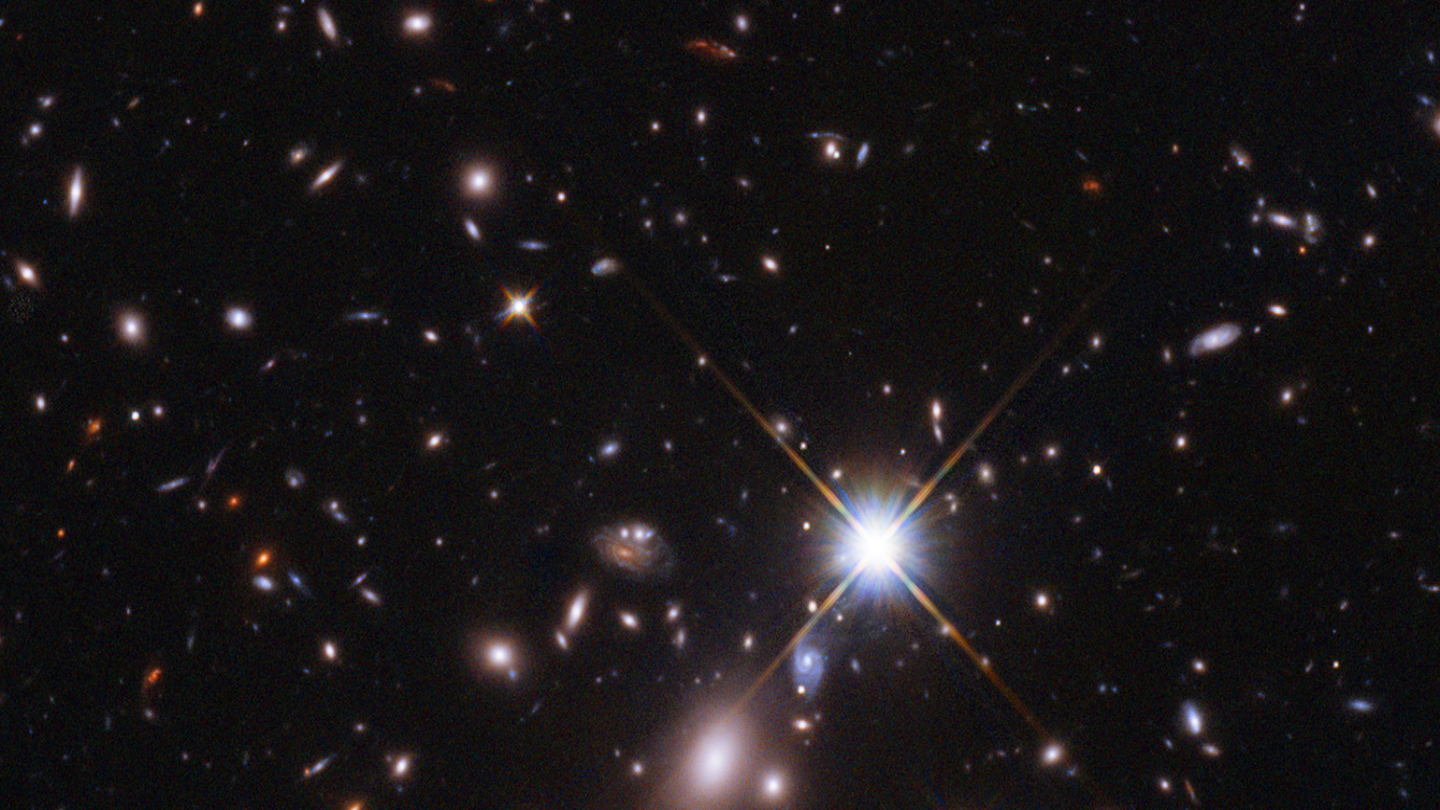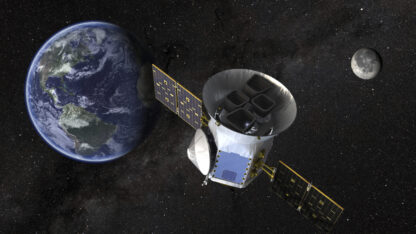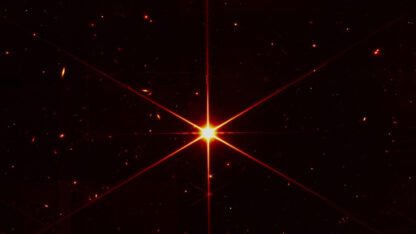Astronomers have used the Hubble Space Telescope to capture light from what appears to be the most distant single star ever seen.
Because light takes time to travel through space, scientists see this star as it appeared when its light began its journey 12.9 billion years ago — just 900 million years after the Big Bang that started the universe.
The find, described in the journal Nature, is unusual because most of the light that scientists have spotted from the early days of the universe has come from galaxies that contain many stars and look like little blobs.
“We’re actually able to pick out the light from this one individual star,” says Brian Welch, a PhD candidate at Johns Hopkins University and the lead author of the scientific report that describes this work.
An early moment in the universe’s history
The newly discovered star supplants the previous record-holder for the most distant star ever observed. That one was spotted by Hubble in 2018, and its light had been traveling through space for 9 billion years.
Welch has nicknamed the star ‘Earendel,’ an Old English word that means ‘morning star’ or ‘rising light.’ It’s at least 50 times the mass of the Sun.
He adds that astronomers should soon be able to learn what this early star is made of and how hot it is by using the James Webb Space Telescope, which was launched into space late last year.
Researchers hope that new telescope — the most powerful ever built — will help them better understand how stars like this one were evolving at this early moment in the universe’s history.
An “astonishing” — and unlikely — find
The discovery was a bit of a lucky break.
The star just happened to be in a spot that was strongly affected by a kind of natural magnifying glass.
A massive object like a cluster of galaxies will warp the space around itself — as was predicted by Albert Einstein’s theory of general relativity — and this warped space can act as a lens that magnifies any light that travels through it.
Scientists sometimes take advantage of this phenomenon to search for objects that would normally be too faint to see.
Welch and his colleagues had been doing that when they recently found a magnified galaxy from within the first billion years of the universe’s history. He was trying to understand how exactly its light had been distorted. Then he realized that one particular area should have an unusually high level of magnification.
In fact, the level of magnification was so high, by a factor of thousands, that it became apparent what the researchers were seeing there had to be something that was actually rather small. It had to be a single star or a binary star system, not a star cluster or some other large component of a galaxy.
“It’s sort of pretty amazing to find this,” says Garth Illingworth, an astronomer at the University of California, Santa Cruz.
The volume of space that gets extremely magnified by giant clusters of galaxies isn’t all that large compared to the vastness of space, he says. “It’s remarkable to find an object like that right on the most highly magnified part. That, in itself, is sort of an astonishing discovery.”
Illingworth thinks it’s very likely that this star is part of that same galaxy they were studying, rather than some unrelated object, but that still needs more confirmation. “But, you know, they’re getting Webb data,” says Illingworth, “and they’ll do that with precision.”
Copyright 2022 NPR. To see more, visit https://www.npr.org.
9(MDAxODM0MDY4MDEyMTY4NDA3MzI3YjkzMw004))

9(MDAxODM0MDY4MDEyMTY4NDA3MzI3YjkzMw004))








